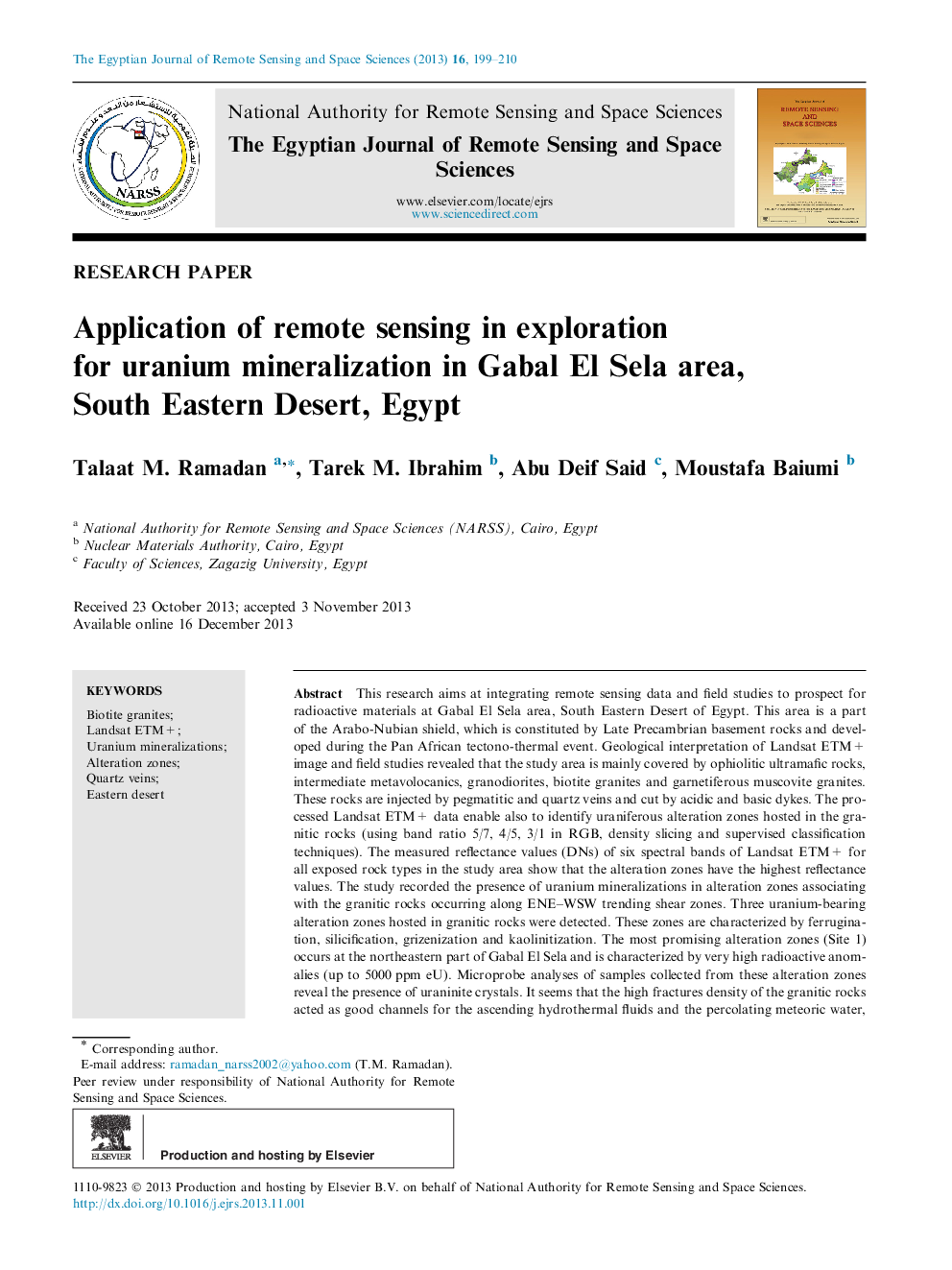| کد مقاله | کد نشریه | سال انتشار | مقاله انگلیسی | نسخه تمام متن |
|---|---|---|---|---|
| 4681281 | 1635098 | 2013 | 12 صفحه PDF | دانلود رایگان |

This research aims at integrating remote sensing data and field studies to prospect for radioactive materials at Gabal El Sela area, South Eastern Desert of Egypt. This area is a part of the Arabo-Nubian shield, which is constituted by Late Precambrian basement rocks and developed during the Pan African tectono-thermal event. Geological interpretation of Landsat ETM+ image and field studies revealed that the study area is mainly covered by ophiolitic ultramafic rocks, intermediate metavolocanics, granodiorites, biotite granites and garnetiferous muscovite granites. These rocks are injected by pegmatitic and quartz veins and cut by acidic and basic dykes. The processed Landsat ETM+ data enable also to identify uraniferous alteration zones hosted in the granitic rocks (using band ratio 5/7, 4/5, 3/1 in RGB, density slicing and supervised classification techniques). The measured reflectance values (DNs) of six spectral bands of Landsat ETM+ for all exposed rock types in the study area show that the alteration zones have the highest reflectance values. The study recorded the presence of uranium mineralizations in alteration zones associating with the granitic rocks occurring along ENE–WSW trending shear zones. Three uranium-bearing alteration zones hosted in granitic rocks were detected. These zones are characterized by ferrugination, silicification, grizenization and kaolinitization. The most promising alteration zones (Site 1) occurs at the northeastern part of Gabal El Sela and is characterized by very high radioactive anomalies (up to 5000 ppm eU). Microprobe analyses of samples collected from these alteration zones reveal the presence of uraninite crystals. It seems that the high fractures density of the granitic rocks acted as good channels for the ascending hydrothermal fluids and the percolating meteoric water, that leached the uranium minerals disseminated all over the rocks and redeposited them along the fractures of the shear zones. This study demonstrates the utility of orbital remote sensing data for finding unknown mineralized zones in the Eastern Desert of Egypt and similar arid regions.
Journal: The Egyptian Journal of Remote Sensing and Space Science - Volume 16, Issue 2, December 2013, Pages 199–210